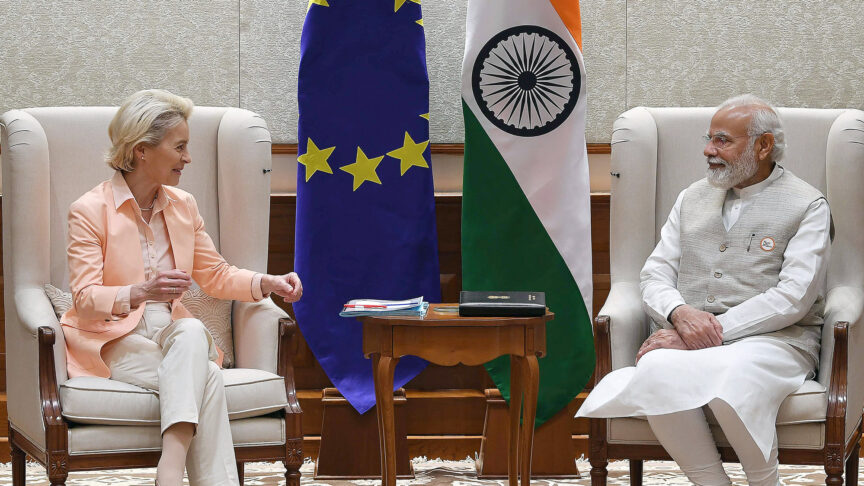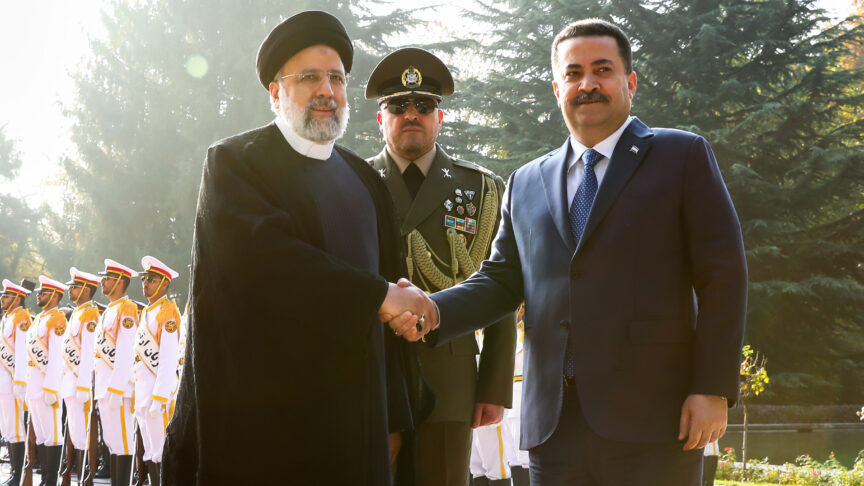Why resettlement is the most realistic response to the refugee crisis
Creating safe routes is the best way to enforce borders: a wall without a door is unlikely to stand
When the heads of EU governments meet this week in Brussels, the refugee crisis will once again be on the agenda. This crisis is almost one year old, yet Europe has still failed to devise a coping mechanism to deal with a phenomenon that will be with us for some years more. Most European leaders seem to be focusing on two efforts: reducing the overall numbers coming to Europe or diverting the problem to their neighbours by building walls and refusing to participate meaningfully in any mechanism to share the burden.
Creating safe routes is the best way to enforce borders. A wall without a door is unlikely to stand.
Yet, a realistic response exists. Europe should focus on the four “Rs”: resettlement, redistribution, readmissions, and registration. First and most importantly, Europe must go beyond the current system in which refugees come to Europe illegally and then apply for asylum. This is risky for refugees as hundreds, many of them children, die en route. It also fuels smuggling networks and poses management problems for Europe as it is faced with an unpredictable flow. Creating safe routes is the best way to enforce borders. A wall without a door is unlikely to stand.
The pros of resettlement
Resettlement is one of the best options available if one wants at the same time to uphold the rights of people fleeing war or poverty while being able to manage high numbers of arrivals and guaranteeing Europeans’ sense of security. This is why EU leaders already agreed in June last year to resettle 20,000 individuals. With resettlement, refugees are interviewed, screened, identified and selected directly in refugee camps or in the nearest point to their country of origin.
This has several advantages.
First, it saves lives by avoiding illegal and unsafe trips. Second, it ruins the business of smugglers who are responsible for the potentially lethal travel conditions and who have an interest in keeping numbers of migrants high. Third, it gives more security guarantees to EU residents because identification is done in a more structured way than can realistically be done in a “hotspot” in an island flooded with thousands of new arrivals. Fourth, it makes the flow predictable and therefore more manageable: it is easier to organise public services if you know you will get a certain number of people by a certain date. Fifth, through resettlement, families are more likely be moved together than they are in the current system: ever more unaccompanied minors now travel to Europe and then ask for reunification (one third of those arriving through the Mediterranean since 1 January are children). Integration in the hosting societies is also made easier by the combination of these elements.
From a Middle Eastern and North African perspective, any plan for resettlement would need to address a number of challenges and question marks. First, it would need to be gradually extended from Turkey to other countries, particularly Lebanon and Jordan who risk destabilisation under current ratios between their nationals and Syrian refugees. Overall numbers will have to go up consequently. Also, it should not be the only legal way to flee to Europe as many people deserving refugee status will keep coming from countries where resettlement is impossible.
Samsom’s plan
The Dutch Labour leader Diederik Samsom made a proposal along these lines in late January: up to 250,000 refugees would be resettled in Europe from Turkey, in exchange for Turkey taking back all those who are caught trying to enter Europe illegally. In other words, the creation of a legal pathway would go hand in hand with the closure of illegal avenues.
Instead of going for the Samson plan, Europeans could be tempted to go for illegal pushbacks of those currently trying to come from Turkey to Greece
This plan, reportedly backed by ten EU member states, is not going to be on the agenda of the EU Council this week. There is very little appetite in eastern Europe, France or the UK for any plan that accepts hundreds of thousands of new refugees. To work, resettlement needs relocation and that is not working at all: only a few hundred refugees from Greece and Italy have been moved to other member states, out of the million that have arrived.
Instead of going for the Samson plan, Europeans could be tempted to go for illegal pushbacks of those currently trying to come from Turkey to Greece. There is a risk that rescue operations between the two countries, boosted recently by NATO’s contribution, end up being a way to intercept the boats in Turkish waters and bring them back to Turkey, potentially implementing a policy of illegal push-backs of asylum seekers. This is deeply problematic: resettlement makes sense only as part of a policy intended to make the process at the same time more humane and manageable, not as a one-sided way to close borders.
The Four “Rs” of a realistic response
Ultimately, in order to work and be politically viable with domestic audiences, an EU resettlement scheme would need to go hand in hand with the three other “Rs”. The first and most important element is redistribution. Resettlement can only work if there’s an agreement at least among a number of member states for the redistribution of refugees arriving in Europe. The countries that do not want to receive refugees on their territory would have to contribute to ease the financial burden. In other words, the relocation mechanism devised by the Commission last year has not worked because the receiving countries were not keen to accept refugees and the refugees themselves were often not very keen to move to countries where they had no family ties and no work opportunities. So the only alternative is to share costs rather than people.
Secondly, the EU is putting a big focus on “readmissions”, the technical word for returning to their country of origin or a third country those who do not qualify as refugees or are assigned any alternative humanitarian protection. There can be voluntary returns policies, based on economic incentives and training. These were at the heart of the agreement between European and African countries signed in Valletta in November. Recently, thousands of Iraqis have decided to go back from Finland to their home country.
But the EU now is actually focusing on forced returns in which people are flown back to their country of origin, usually after a lengthy legal process. This process is not only lengthy, but it requires usually at least one policeman flying with each migrant and a strong commitment from the receiving country to accept back its nationals. In many cases, migrants do not have passports and so European states have to issue temporary travel documents (“laissez passer”) which then have to be recognised by the authorities at their destination.
For all these shortcomings, readmissions are the only law-based system to enforce border controls. There is little point in establishing a system of asylum applications and other forms of humanitarian protection if there’s no consequence for those who do not fit into these criteria. Yet, one should not overestimate the impact that readmitting a few tens of thousands migrants (these are the realistic numbers) can have on flows of hundreds of thousands of people.
The fact is that the vast majority (83 percent since 1 January) of those arriving in Europe through the Mediterranean come from either Syria, Iraq or Afghanistan and many in the remaining 17 percent could also qualify as refugees. Thinking that the solution to the current crisis is to push back and “readmit” those who are not refugees implies thinking that a mere cut of less than 20 percent in numbers would ease the situation in Europe.
Finally, registration and identification is key but here Europe will have to make some choices if it wants the system to work. The great advantage of resettlement as compared to the current system or the complete closure of borders is that Europe would identify and register individuals before they travel to Europe.
Any resettlement plan would not completely eliminate the possibility that people from countries other than Turkey arrive on EU shores and apply for asylum. Yet, hotspots can only have a limited capacity of a few thousand people at any given moment. So if there are thousands of new arrivals every day, identification becomes patchy and often unfair, with lots of people being pushed back just because upon arrival they stated that they were willing to work – something which Europe should welcome as it can hardly keep all new arrivals on welfare. This is leading many people to try to cheat the system by pretending to be Syrian nationals deserving refugee status.
Ultimately, identification only works if it’s based on cooperation of those who are to be identified and this is unlikely to happen if they stand a high chance of being rejected. Europe will have to choose between proper identification (which is the prerequisite of security) and an ineffective policy of push-backs and “closed borders”. This means that some legal channels for economic migrants (or those fleeing climate change who do not fit into refugee criteria) have to be created in order to incentivise identification and discourage recourse to smugglers.
The alternative to the policy of the “4 Rs” is what we have before us now. Efforts to keep refugees outside of Europe will prove useless and inhumane if the wars in the greater Middle East continue, extending the area of instability to Turkey. A disorderly flow of hundreds of thousands of people will not be contained with hotspots. Commendable efforts to improve conditions of refugees in the region can help to avoid even higher numbers, yet Europe must find a way to cope with the hundreds of thousands who will still come, no matter what.
The European Council on Foreign Relations does not take collective positions. ECFR publications only represent the views of their individual authors.


